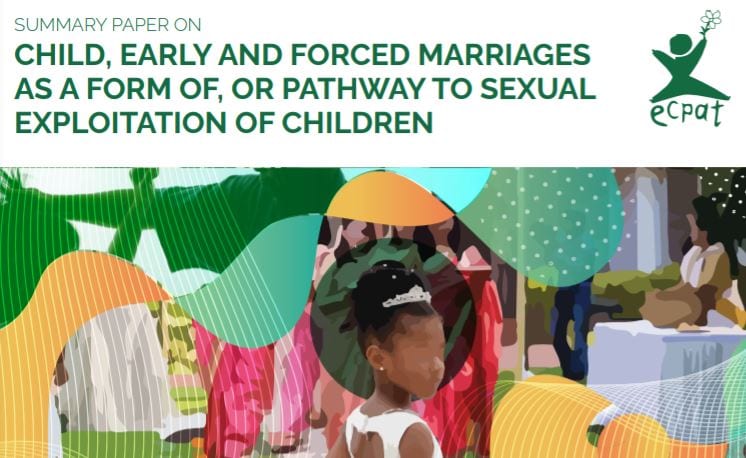
Child Marriage as a Form of, or Pathway to Sexual Exploitation of Children
‘Child marriage’ refers to a formal or informal union in which at least one of the parties is under 18 years of age. The term ‘child marriage’ should also be used to describe such circumstances, even in countries where majority age (i.e. adulthood) is legally attained earlier than 18 years of age or upon marriage.1 ‘Early marriage’ is used to describe unions that are legal or customary and involve at least one person below 18 years of age in countries where the majority age is legally attained earlier than 18 years of age or upon marriage.2 ‘Forced marriage’ is a term used to describe a legal or customary marriage which occurs without the full and free consent of one or both of the parties involved, or in which one or both of the parties are unable to end or leave the marriage.3 International law considers all child and early marriage as forms of forced marriage because children under 18 cannot provide full, free and informed consent. This is on account of insufficient maturity, as well as an inability to withstand adult social and family pressure.4 ECPAT International uses the umbrella term ‘child, early and forced marriage’ (CEFM) to capture these different circumstances as encouraged by the Terminology Guidelines for the Protection of Children from Sexual Exploitation and Sexual Abuse (the ‘Luxembourg Guidelines’).
Read paper here.
